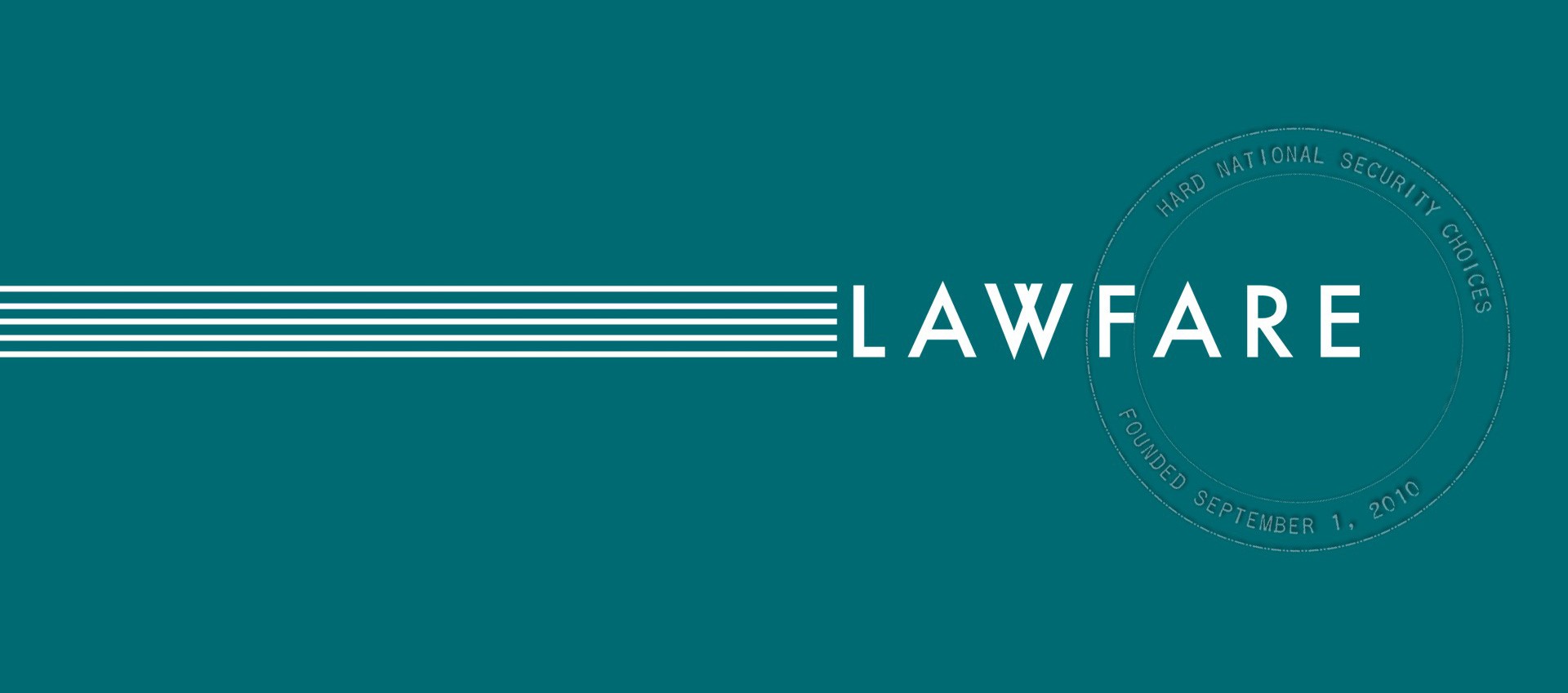Readings: Clausewitz for Kids
The other day, Wells drew my attention to what could be the single most excellently eccentric national security-oriented project currently ongoing on the web: It is called Clausewitz for Kids. I am apparently not the first to discover it. Spencer Ackerman had this story about it last year.
Published by The Lawfare Institute
in Cooperation With

The other day, Wells drew my attention to what could be the single most excellently eccentric national security-oriented project currently ongoing on the web: It is called Clausewitz for Kids. I am apparently not the first to discover it. Spencer Ackerman had this story about it last year. But I had missed it until the other day, and I suspect most Lawfare readers are unto this very day unaware that a woman named Caitlin Fitz Gerald is currently writing a comic book edition of Clausewitz's On War--entitled The Children's Illustrated Clausewitz--featuring lectures in a Prussian forest by a hare in a military uniform. To make matters all the more fun, she is blogging the process to boot. Here's a sample from her latest--Book 2:
Guten Morgen, class. This week, we will be talking about the theory of war. We will be talking about how we define and classify the art of war and the science of war, and how we develop and study and analyze the theory of war. You must please listen very carefully to be sure that you understand. Some of this is quite hard to explain. War is fighting. However much the methods of doing so might change, that fact remains. The art of war is the conduct of war---Yes, Otter?I wrote to Ms. Fitz Gerald, who also blogs at the web site Gunpowder and Lead and tweets under the handle @caidid. She sent me the following about the project:
Highly Recommended. By the way, if anyone has any other nominations for the title of Most Excellently Eccentric National Security-Oriented Project Ongoing on the Web, please let me know.The idea for the Children's Illustrated Clausewitz grew out of a conversation on Twitter. My friend Jason (@JasonFritz1) mentioned that he had been reading Clausewitz when his son (around 6 at the time) asked to see the book, and upon looking at it said, "Daddy, this book doesn't have any pictures." Another friend (@aelkus) commented that an illustrated Clausewitz would be amazing. I happened to be reading Clausewitz all the way through for the first time at the time, and that sounded like a fun project.I studied history and art as an undergraduate and international relations in grad school, so it is an odd project that brings together several of my seemingly disparate interests, which is something I've always liked doing. (To give a couple of examples, as an undergraduate printmaker I did a series of prints on Norse mythology; a comic book project with my dear friend @anthony_barrows that combined mythology - Norse, Greek, Mayan, et al. - and Existentialist philosophy; and another series of prints on the Russian tsars as manifestations of the Seven Deadly Sins). I also have always enjoyed following through on those silly things you talk about doing but never do. (See again that mythology/Existentialism comic book, which was conceived late one night in a Dunkin Donuts, and which was additionally incredibly complicated to execute).As an artist, I am very process-oriented. I tend to be a lot more interested in the creation of something than in the final product. So going in to this, I didn't really have any intentions for what I wanted to do with it once finished. I decided to blog my progress in order to get feedback as I went along. Once I had gotten well into it , enough people had expressed an interest in the book that it seemed like it would be worth trying to get it published. I have spoken in very preliminary terms with some potential publishers and I hope that it will be, either through a traditional publisher or barring that, possibly through a Kickstarter.I do all the writing and art myself, and try to keep 'smart 10-year-old' as my guideline when I work on the text. I have been lucky enough to get a really nice response and engagement in the project through Twitter, comments, and emails, mainly falling into three categories: 1) 'I can't wait to read this to my kids!' 2) 'Maybe now I will finally understand Clausewitz!' and 3) 'This version could be very helpful in teaching strategy to military officers.'Although I've received many messages from people talking about reading the Children's Illustrated Clausewitz to their kids, and although I do try my best to keep the text comprehensible to that smart 10-year-old, I see the primary audience as being adults. War is an ugly reality of life and I think that while much of what he discusses can come through as pretty dry to your average person, Clausewitz's text has some really important messages about the inherent messiness of war, the importance of strategy, and the wisdom of only getting involved in a war if you have a clear aim the achievement of which would be worth the sacrifices inherent in its pursuit, and a clear strategy for achieving it, and I hope when this is all finished, those ideas come through in my interpretation.In the meantime, I am enjoying the challenge of boiling Clausewitz's text down to its essential ideas (and any success I have with that I owe to Mrs. Colvario, my 7th grade Reading Comprehension teacher/11th grade AP Writing teacher, for whom I must have written hundreds of précis), and the creative process of putting it to dialogue and illustrating it.
Benjamin Wittes is editor in chief of Lawfare and a Senior Fellow in Governance Studies at the Brookings Institution. He is the author of several books.





